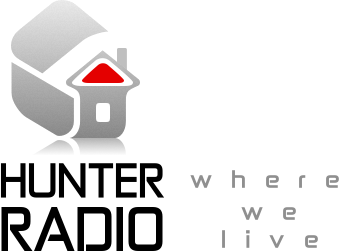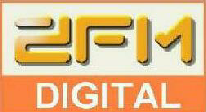



Radio 16 listeners are generally aged 40 -
Beach Radio collaborates with City Councils to provide the widest possible advertising exposure into Australia’s famous summer beach Lifestyle. Whether your target market is families, students, backpackers..in fact any regular beach user, we can reach them.
ZFM Country Rock is Australia’s oldest digital country music station on air since
2001. Its target demographic is 40 -
Hunter Radio is the home of Newcastle NSW’s favourite Radio brands. Hunter Radio combines stations from the local Radio 16 Network: Radio 16 , the local ZFM Digital from The Beach Radio Network and ZFM Country Rock from the Hume Travel Radio Network into a powerful media group. The groups advertising reach inside and outside the hunter is unrivalled in the region.
Speak To Our Sales Team Today:
contact [@] hunterradio.com.au
Download our demographic information here
Aussie Jazz Radio collaborates with Australian Jazz Musicians and Jazz Festivals to provide the widest possible advertising exposure into Australia’s famous Jazz scene. We come to you live from the Philip Island Jazz Festivals every year.


these days that doesn’t in some way rely on the Internet. Thus the majority of retiring Australian’s will already have significant Internet skills.
The ACMA study the “Use of digital media and communication by older Australians” (2012) demonstrates that older Australians do not “Live on
the internet” like so many of their younger counterparts, they are selective about what they use it for showing great loyalty to selected or
favourite past times. They tend to be more loyal to favourite sites, rather than surfing continually to others; which means when they find
something on the Internet that meets their needs they stick to it.








on the move. City Radio disappears from the picture.
back into the picture in the form of iDigital Radio.

often early technology adopters They also have a higher than average income and often purchases products and services online.

results to a population of 22,620,600 people.

access Radio via DAB+ (Source: Commercial Radio Australia).
Conversely there are 16.2 Million Data enabled phones in Australia, 12 Million Internet services, 96% of which are high speed broadband
(Source: Australian Bureau of Statistics).
Despite this AC Nielson claim that DAB+ Radio has a higher share in Australian Digital Radio listening in their publication “Radio Advertising
Australia’s listening” (2010), they do however omit to mention several key factors pertaining to this finding:
Nielson is paid millions of dollars per year by mainly Metropolitan Radio Stations to produce Radio ratings. Despite these ratings completely
contradicting impartial research funded by the ACMA that say the exact opposite; Nielson continue to stand by results that suggest things that
basic common sense says are highly implausible. Nielson says that AM Radio for example is the highest rating in Australia, thus despite a worldwide
decline in a technology that is a relic (it’s even being phased out completely in places like Africa); somehow in Australia it is not a relic because
several large Broadcasting companies have a major stake in it? What indeed would happen if Nielson produced ratings that said no one was
listening to AM/FM at all, would they get a renewed contract to produce “The Ratings”?
In this publication Nielson is referring to people listening to the Internet streams of the Broadcasters who paid for the survey only. These figures
do not refer to Internet listening in general in Australia, just where they apply to Commercial Radio Stations and their blinkered view of media in
Australia.
In a comparison of DAB+ and iDigital the numbers (and indeed common sense) speak for themselves.
The iDigital Radio listener is an “active” rather than passive media consumer
Australian Metropolitan FM Radio currently relies heavily on the concept of “exposure” to bolster falling advertising revenues. The argument is that
people are experiencing radio even if they do not actively turn it on themselves to listen to it.
When they walk past a building and the Radio is playing, that it is claimed is a Radio listener. When a car pulls up beside them at the intersection
and a Radio is playing in that car, again both of them are listening to the radio apparently, this in a noisy city like Sydney!
This argument however does not hold up when we accept that the human being is very good at filtering out noise around them (particularly in noisy
cities), otherwise we would not be able to read to ourselves or sleep at night. In fact it is estimated that we receive around one billion sound
stimuli every second to our brains yet the human brain manages to filter out all but about 100 sensations. Human beings choose what they do and
don’t pay attention to, even if it is all around them.
Also simply because a Radio is turned on, this does not mean it is being actively listened to; very often it is just background noise because some
people “always turn it on while they are doing something”. The Internet provides broad choice in activity. There are millions of websites and when
a listener chooses to listen to an iDigital audio stream this is clearly an active qualified decision. Where there is a choice of maybe ten radio
stations on any given Radio dial, there are choices in the millions on the Internet. So when a person chooses to listen to an iDigital station this is
a valuable and highly specific, patently active choice made out of millions of choices rather than just idly out of a handful.
iDigital Radio is hard to avoid
When people use the internet on a fixed or mobile device there is a high level of alertness. Bright screens and interactive content keep people’s
attention while FM Radio is just “there” in the background fighting for a wandering mind. iDigital is hard to avoid: it is experienced commonly
through earphones directly in the ear, or computer speakers close to the listener facing them. The listener is in a situation where they must
listen to it, or simply turn it off. Therefore every iDigital listener is of far greater value – iDigital is very much “in their face” and they are
constantly making an active choice to continue to listen through advertising breaks and back into music.
iDigital Radio is a “conjoined” medium
iDigital Radio has close ties with social media such as facebook, Twitter and other mass interest websites, indeed iDigital Radio is a close part of
the complete Internet experience. iDigital Radio is another thing that a person can “do” on the Internet as against a loose attempt to meld a new
technology with one that is ninety years old and received on a completely separate device. DAB+ radio, even though a new technology has the
same limitations.
iDigital is the most easily remembered and accessed
The majority of household Radio’s do not possess functions for storing favourite stations; car radios have traditionally had this feature. These
features have never been very simple to use and the majority of people simply remember the stations number or leave the station tuned in place
instead of trying to find it each day. Whilst it is not outside the grasp of the average individual to program a car radio memory, often people are
lazy with technology or forget how to use it. iDigital Radio relies on the colourful, easy to use one click shortcut system found in all Internet
browsers and on phones. Favourite Stations can be quickly stored right on the desktop of user devices. It is accessed identically to other world
renowned favourite pastimes like Facebook, texting, email and Twitter.
iDigital is transported with the user
Metropolitan media consumers have a wide variety of choice. This choice began with the advent of the Sony Walkman and later the Apple iPod.
This suited the media needs of the Metropolitan consumer as they tended to be less involved with their local community not needing the bundled
information of Radio. Of course this technology has now been superseded by mobile phones and the iPod Touch.
During this same period advances were made in car entertainment starting with cassette players, CD players then car MP3 players. Concurrently
broad claims continued to be made about in-
These days Mobile phones go everywhere with most individuals. Unlike a car entertainment system it goes with an individual into the car and
comes out with them again. Whatever an individual was doing on the phone is transported with them to the car environment transparently. Indeed
the use by individuals of their phones in the car environment has become so common that NSW was recently forced to pass new “cradle” safety
laws. Their research clearly recognizes the high use of phone Audio in cars: “You are allowed to use the ..audio functions of a phone while
driving” (RTA 2012).
This means someone listening to iDigital Radio on their smart phone outside a car is very likely to simply transparently transport that experience
with them. As the phone remains an integral part of the car environment there is less likelihood that iDigital will simply be switched off in favour
of in car Radio.
Mobile phones are a self-
the phone and integrate it with the cars built in amplifier and speakers.
Whilst car makers are reluctant to include DAB+ radio’s in new cars because of their high cost and the numerous competing standards, 3G
Internet Radio enabled receivers are becoming the next step forward in car Radio.
In a 2012 Media Consultants Mark Kassof and Co. Conducted a Survey among the top Radio Executives in America. They were asked to rate
what they thought was the “biggest threat” to traditional Radio’s future. An overwhelming 84% cited in-


are adapting to superior technologies at much the same rate as younger people. This only makes sense as older people most often have children
and grandchildren who have connected them to the Internet to aid family communication. This informal computer education within the family
becomes an important part of the bonding of the family and the computer quickly becomes a very valued and warmly accepted part of an older
person’s life. It also opens the entire world up to people who are often isolated due to infirmity.

Australia" (2011) the ACMA found that:
between Radiocommunications, telecommunications, broadcasting and the internet.
Television Ratings group OzTAM predicted this trend in 2007:
National Broadcaster Austereo did some Research on listening to Radio via the Internet also:
via pod casts for 54 minutes.

Australia: that's about 40% more coverage than FM Radio and 78% more coverage than DAB+. It is becoming increasingly rare to find any
individuals or households without the ability to receive iDigital on phones or computers. There are about as many mobile phone services as there
are people in Australia.

During the Walkman and iPod period the listening habits of consumers changed. People no longer listened to talk heavy Radio stations to
experience music; instead they listened to it in uninterrupted form on their own personal media players. Radio realized it needed to re-
Advertising.
The Jack Radio format emulates the shuffled playlists of portable devices; it is music intensive and breaks a listener’s attention away from their
favourite music for very short periods. Blink advertising replaces the ten minute advertising breaks of traditional commercial formats with a
maximum of three minutes in every twenty. iDigital radio is the only platform in Australia that has adopted its own re-
With this format iDigital Radio manages to give people almost precisely what they want in very nearly the exact form they want it. For this reason
iDigital listeners tend to show far less resistance or avoidance of the advertising contained in programming. Its frequency and length do not
significantly interfere with the listening experience and because it occurs less often the message has an immediate impact that most often gets
lost when people are forced to mentally filter out ten or more minutes of advertising “hurled” at them in Metropolitan FM formats.
Get all the news at TalkNews.com.au













